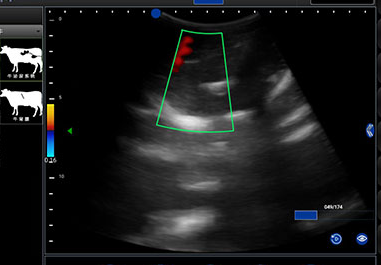Accurate age estimation of bovine fetuses is critical for effective herd management, reproductive planning, and ensuring the health of both the dam and calf. Ultrasound technology has revolutionized this process, offering a non-invasive, efficient, and reliable method. In this guide, we’ll explore how to use ultrasound bovine techniques to estimate fetal age, the role of bovine pregnancy ultrasound, and the equipment required for optimal results.
Why Use Ultrasound for Bovine Fetal Age Estimation?
Ultrasound is the gold standard for monitoring bovine reproductive ultrasound processes. Unlike manual palpation, it provides real-time visualization of the fetus, enabling precise measurements of key growth parameters. By tracking fetal development, farmers and veterinarians can:
Predict calving dates accurately.
Monitor fetal health and detect abnormalities.
Optimize nutrition and care for pregnant cows.
Key Steps for Bovine Fetal Age Estimation via Ultrasound
1. Choose the Right Bovine Ultrasound Equipment
Selecting high-quality bovine ultrasound equipment is essential. Portable, durable machines with a 5–7.5 MHz linear transducer are ideal for transrectal or transabdominal scans. Ensure the device offers:
High-resolution imaging for clear fetal structures.
Measurement tools (e.g., calipers) to assess crown-rump length (CRL) and biparietal diameter (BPD).
User-friendly software for data recording.
2. Timing the Examination
For bovine pregnancy ultrasound, timing is critical. Fetal age estimation is most accurate between 30–150 days of gestation. Early scans (30–90 days) focus on CRL, while later stages (90–150 days) use BPD and other skeletal metrics.
3. Positioning and Imaging Techniques
Transrectal approach: Preferred for early gestation (30–90 days). The fetus is closer to the rectal wall, enabling clearer CRL measurement.
Transabdominal approach: Used in later stages (90+ days) to assess skeletal development.
Ensure the cow is properly restrained to minimize stress and movement artifacts.
4. Measuring Fetal Parameters
Crown-Rump Length (CRL): The primary metric for early gestation. CRL increases linearly until day 90.
Biparietal Diameter (BPD): Measures skull width after day 90, correlating strongly with gestational age.
Reference charts linking these measurements to gestational age are essential for accuracy.
Interpreting Ultrasound Data
Modern bovine ultrasound equipment often includes software that cross-references measurements with gestational age databases. For example:
A CRL of 1.5 cm corresponds to ~30 days.
A BPD of 3.0 cm aligns with ~120 days.
Regular practice and calibration against known breeding dates improve estimation precision.
Applications of Bovine Reproductive Ultrasound
Beyond age estimation, bovine reproductive ultrasound supports:
Early pregnancy detection (as early as 28 days).
Twin pregnancy identification.
Monitoring placental health and uterine conditions.
Challenges and Best Practices
Operator Skill: Training is vital to avoid misdiagnosis.
Equipment Maintenance: Clean probes after each use and update software regularly.
Combine Methods: Pair ultrasound data with breeding records for cross-verification.
Mastering ultrasound bovine techniques for fetal age estimation enhances herd productivity and animal welfare. By investing in reliable bovine ultrasound equipment and integrating bovine pregnancy ultrasound into routine reproductive checks, farmers and veterinarians can make data-driven decisions that benefit both cattle and operations.
Whether you’re new to bovine reproductive ultrasound or refining your skills, consistent practice and staying updated on technological advancements will ensure success in this vital aspect of livestock management.
Post time: Apr-28-2025




